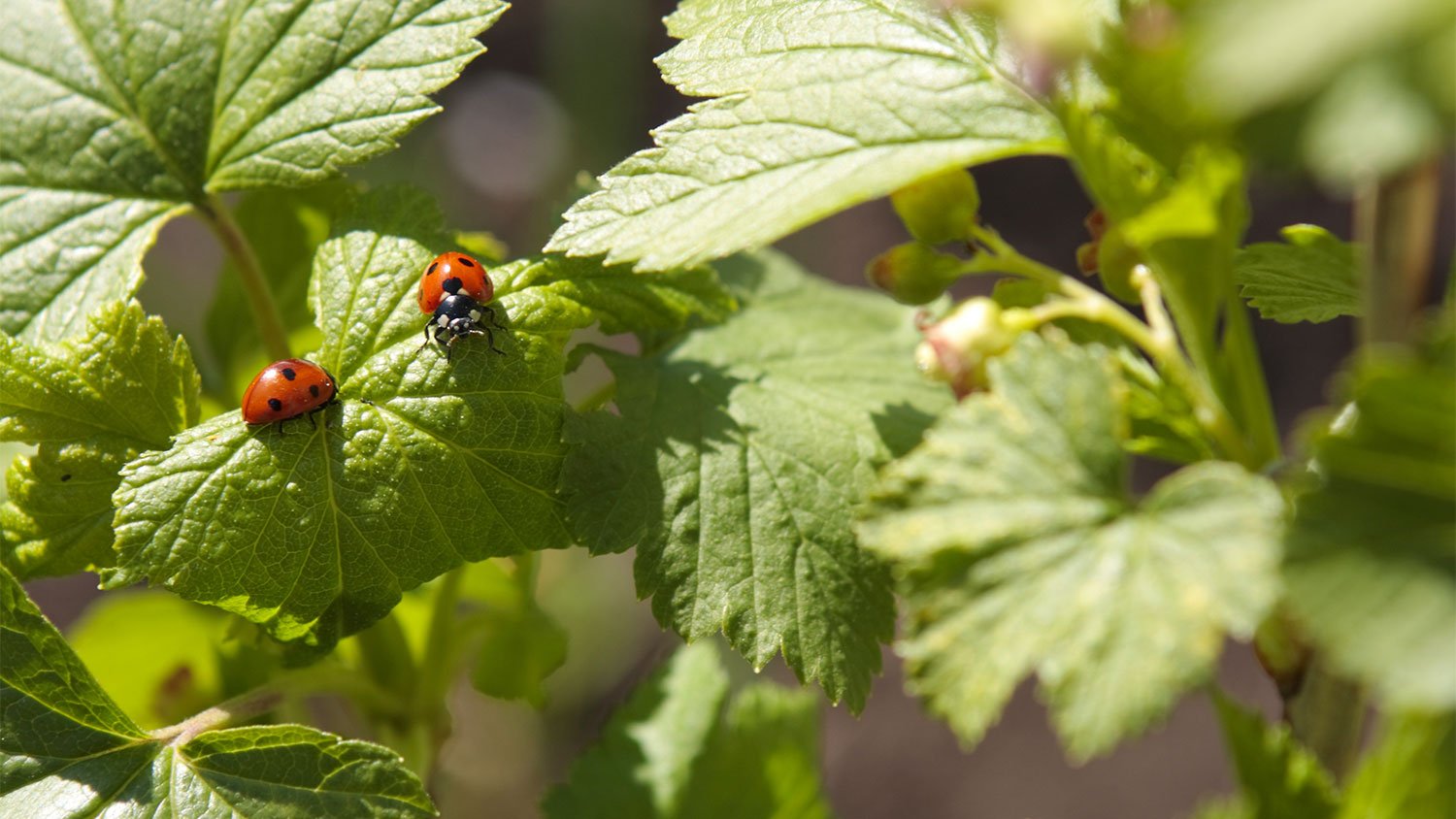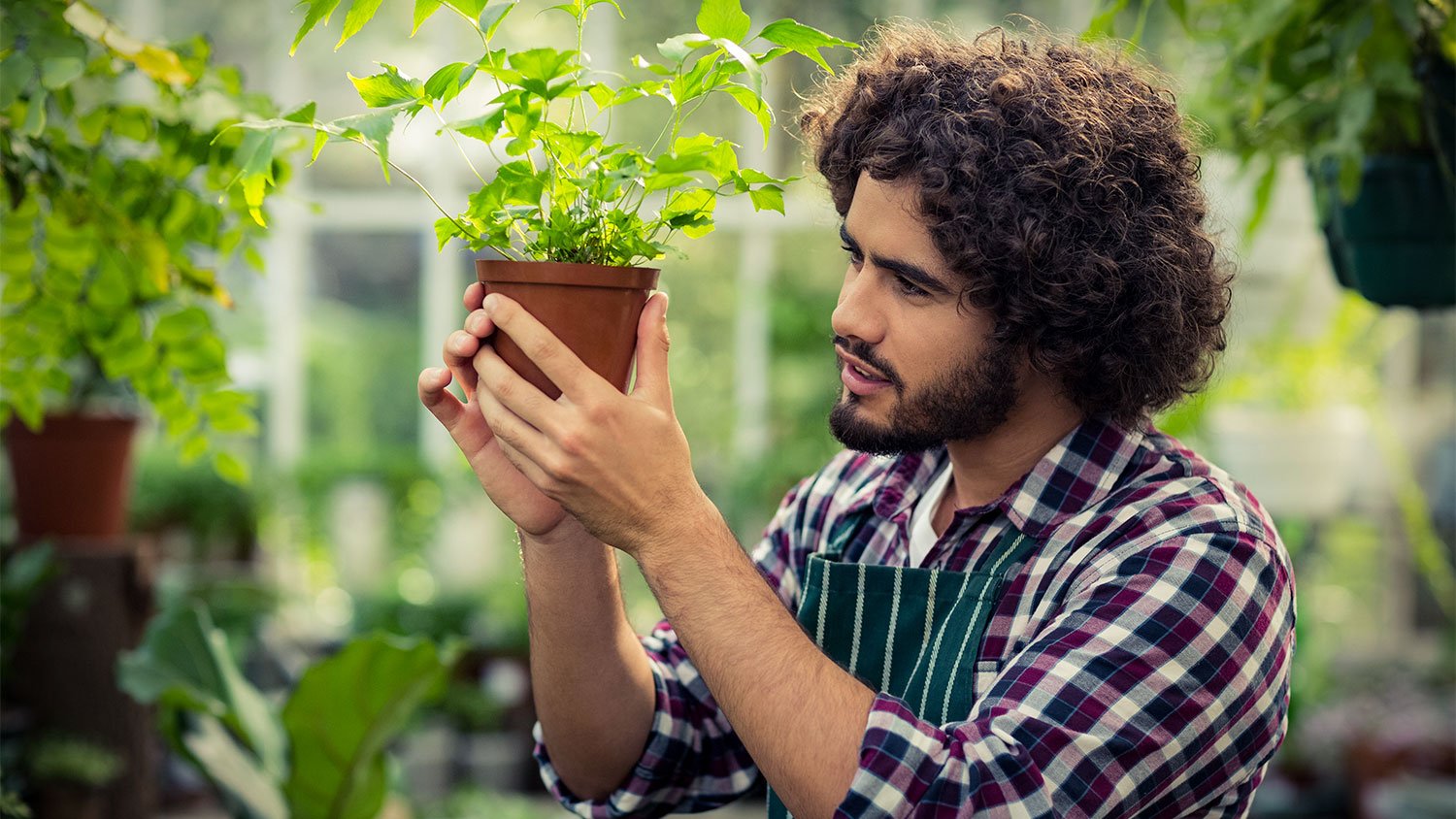
If you discover a wasp nest near your home, you’ll want to remove it ASAP. Learn wasp nest removal cost factors in this guide.
Fight back against those insatiable arachnids


Figuring out how to get rid of spider mites can be tricky, especially since they’re practically invisible to the naked eye. Still, their damage tells a tale in lieu of their appearance, and it’s important to nab them sooner rather than later. Luckily, once you’ve pinpointed the tiny troublemakers at work, removal (and prevention) is relatively straightforward.

Spider mites are common pests that inhabit indoor plants and outdoor gardens. These itty-bitty arachnids are roughly the size of a grain of sand and are close relatives of both ticks and bigger spiders. They are typically black or yellowish orange with two black spots, but different species can be red, brown, green, violet, or translucent.
Mites attach themselves to the undersides of plants, sucking the juices from leaves and doing serious damage over time. Some even inject poison as they feed, which can discolor or even distort the shape of plants.
Spider mites are big fans of warm, dry weather, so this is when you’ll most often find them. The mites themselves are minuscule, so it’s easier to spot an infestation by looking for their tiny webs on the undersides of leaves. Leaves can also become mottled, yellow, spotted, or dried up when under a spider mite attack.
If you’re seeing some of the telltale signs but want to be sure, hold a white sheet of paper under the plant’s leaves and give them a tap. If you see tiny flecks falling on the paper, those are most likely spider mites.

Getting rid of spider mites is similar to other treatments for household pests. Ongoing insecticides such as pyrethrins and carbaryl should be avoided, however, as these can also kill natural predators. Here are some of the best methods for treating spider mites.
If you’re wondering how to get rid of spider mites in your outdoor plants, encouraging natural predators is a great way to do it. The ladybird beetle, a.k.a. the ladybug or lady beetle, is a particularly important natural predator of spider mites. Ladybugs are fond of butterfly weed, dill, geraniums, and fennel, so these are great to plant if you’d like them to visit.
Insecticidal soaps and horticultural oil are often very effective at killing spider mites, especially for indoor plants. These call for multiple treatments to stay effective, so be sure to keep a regular routine if you go this route.
Neem oil is a natural product that’s safe for animals, humans, and plants but deadly against spider mites and similar pests. A spray-down with neem oil can kill off the mites and eggs so they’ll stop bothering your plants.

Thoroughly examine new plants and outdoor garden plants before adding them to your collection.
Inspect your plants regularly for webs and tiny mites.
Gently wipe down leaves with a damp paper towel every one to two weeks.
For plants that can withstand the pressure, hit them with a strong spray from your garden or sink hose regularly to knock off any mites.
Keep your plants well-hydrated (but it’s still important to let the soil dry out first to avoid overwatering)
Spray plants with neem oil every two to three weeks to help keep mites at bay.
If you can’t get a leg up on a spider mite infestation, it might be worth calling a pest control service for help. A local pest control company can help you develop an IPM (Integrated Pest Management) program to get those mites under control for good.
Excess nitrogen levels in plants can sweeten up their sap, making them more enticing for spider mites. Be sure you’re not overdoing your fertilization practices and consider bringing in a local soil testing service to help determine which nutrients your soil needs.
Spider mites can’t stand crops like dill, parsley, garlic, lemongrass, rosemary, and peppermint. Planting these around your other plants might be a helpful deterrent. If you’re planting peppermint or lemongrass, it’s wise to confine them to containers so they don’t take over.
From average costs to expert advice, get all the answers you need to get your job done.

If you discover a wasp nest near your home, you’ll want to remove it ASAP. Learn wasp nest removal cost factors in this guide.

The invasive spotted lanternfly makes a mess and causes serious damage to the environment. So, how much does spotted lanternfly treatment cost?

Whether you have bugs, bats, or rodents invading your home, you’ll want to contact an exterminator quickly. Find out how much pest control costs in Columbus, OH.

Foxes are opportunistic scavengers, so you don’t want to give them an excuse to park on your property. Learn how to keep foxes away from your yard.

Many popular cockroach treatments are harmful or annoying for pets. We’ve collected the alternatives that get rid of roaches without the same dangers.

Whether it’s a swarm of mosquitos interrupting your summer evening on the patio or the discovery of fleas in the guest room, you may have to break out bug spray. Read on for tips to reduce your exposure and signs of bug spray side effects.